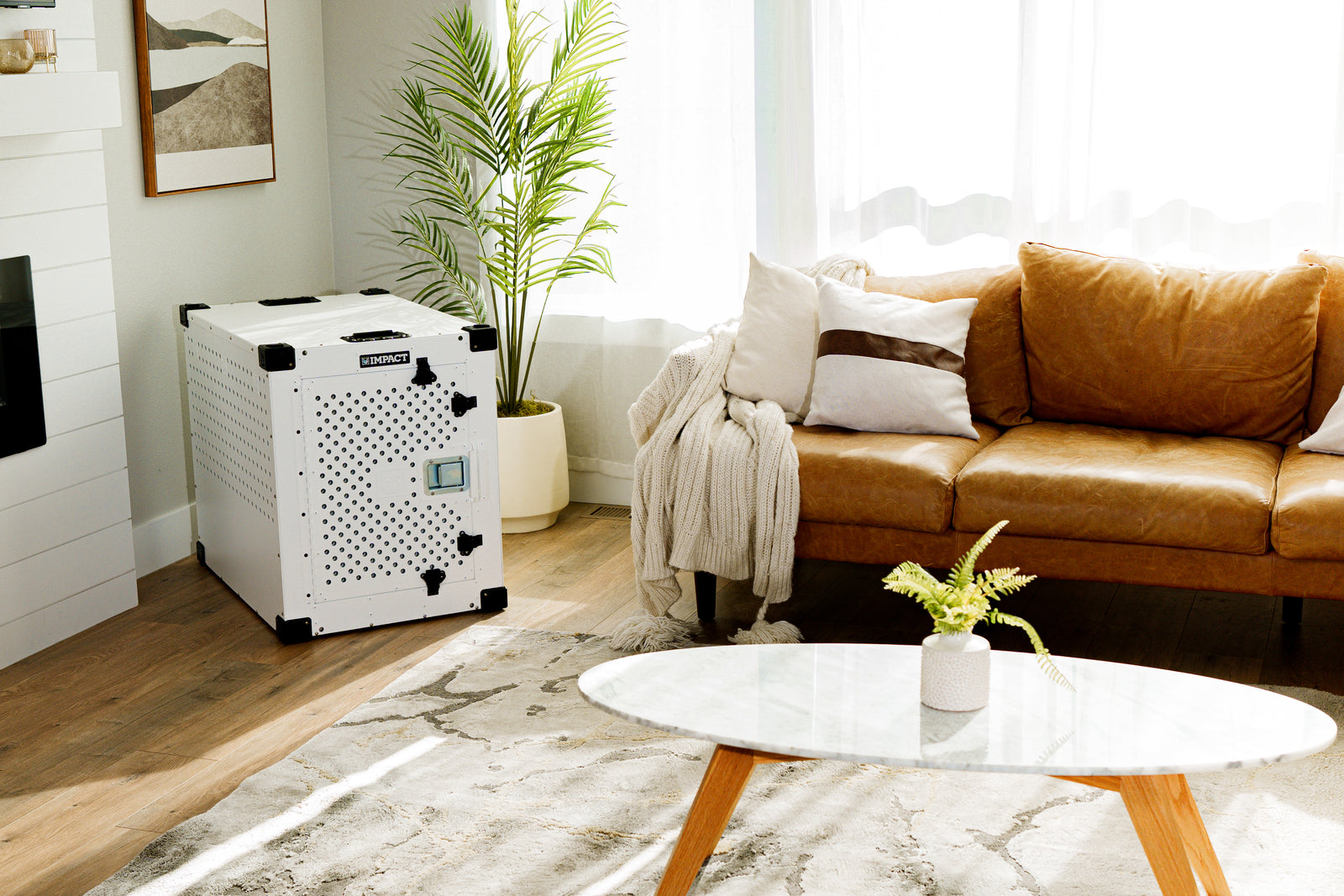Introduce your dog to their new crate
- Set up the crate in a familiar, comfortable area of your home.
- Leave the crate door open so your dog can explore it freely.
- Place treats, toys, or even a piece of your clothing inside to make it inviting.
- Allow your dog to enter and exit the crate at their leisure without closing the door behind them.

Create positive associations
- Begin feeding your dog their regular meals near the crate, gradually moving the food bowl inside.
- Continue using treats to entice your dog into the crate.
- The goal is for your dog to associate the crate with positive experiences.

Practice short, supervised stays
- Once your dog is comfortable eating in the crate, start asking them to stay in the crate with the door closed while you're in the room.
- Start with short durations (5-10 minutes) and gradually increase as they seem more relaxed.
- Remain nearby and visible to minimize anxiety.

Extend time alone in their crate
- Begin leaving your dog alone in the crate for short periods while you leave the room.
- Gradually increase the time as your dog becomes more comfortable, starting from a few minutes to a couple of hours.
- Ensure your dog has been exercised before crating to help reduce anxiety and promote relaxation.

Establish a routine
- Establish a consistent schedule for crating—whether for sleeping through the night or when you’re out of the house.
- Consistency helps your dog understand when to expect crate time, reducing uncertainty and stress.

Monitoring and adjustment
- Observe your dog’s behavior in the crate and adjust durations or conditions based on their comfort levels.
- Use crate time judiciously; too much time in the crate can lead to anxiety and stress for your dog.
- Ensure the crate is always a positive, safe space, never using it as a form of punishment.
- If your dog appears excessively anxious or distressed about the crate, it might be beneficial to consult with a professional dog trainer for personalized guidance.
- Ensure the crate is appropriately sized: large enough for your dog to stand, turn around, and lie down comfortably, but not so large that they can eliminate in one corner and retreat to another.

Need Extra Support?
For expert guidance, check out the Impact Crate Training Course by Will Atherton. This course offers step-by-step instruction from a leading canine behaviorist, helping you master crate training with confidence. Whether you’re facing challenges or just getting started, this course provides the tools you need for crate training success.










